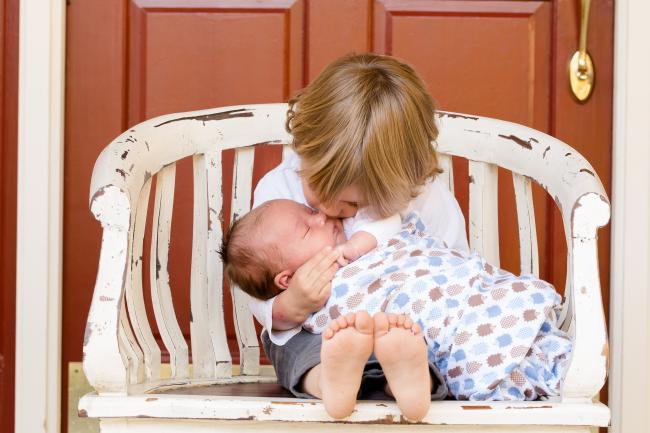Hospitals - The Establishment of Parentage
The establishment of parentage is important to ensure that children receive equal rights and access to many benefits. In an effort to increase parentage establishment and its resulting benefits, the California Department of Social Services partners with licensed hospitals and clinics with birthing facilities through the Voluntary Declaration of Parentage (VDOP). This voluntary in facility program involves about 360 of California's licensed medical facilities including 14 in Riverside County.
The medical facility where a child is born is the best place to establish paternity as both parents are often available to receive information and immediately sign the Voluntary Declaration of Paternity (VDOP) at the time of the baby’s birth. It is a quick, easy, and free way for unmarried parents to create a legal connection between father and child(ren) and avoid the time-consuming, complicated, and costly process of establishing paternity later.

VDOP Procedures
According to California Family Code Section 7571, all hospitals, clinics, or birthing centers must provide unmarried parents the opportunity to voluntarily acknowledge paternity (parentage) upon the event of a live birth. Facilities must provide written information about paternity establishment to unmarried parents and provide the mother – birth parent and attempt to provide the father-other parent the opportunity to sign a Declaration of Paternity. Specifically, you should follow the following six steps:
1. Provide an original (CS909) VDOP, paternity brochure (PUB 244), and the one-page information sheet (CS 910) to the unmarried mother and father (if available).
2. Determine if the parents wish to complete the VDOP. The father’s name cannot be entered on the child’s birth certificate without a signed form.
3. Ensure the form is completed correctly, legibly, and in black ink. Both parents must sign the form in front of a Authorized Witness staff member who must also sign his/her name.
4. Distribute copies according to the form instructions within 10 days of signing. Please do not retain original, completed forms in your facility longer than 10 working days. We strongly recommend completed paternity declarations be sent to the CDSS-POP Unit every week.
Always use your three-digit agency code as part of the address.
Mail our copy with attached green copy to:
Attention: Admin. Accounting
2041 Iowa Avenue
Riverside, CA 92501
Mail DCSS original to:
CDCSS
Paternity Opportunity Program
P. O. Box 419070
Rancho Cordova, CA 95741-9070
Each parent should be given a copy of the completed declaration (yellow and pink copies).
5. Enter the father’s name on the child's birth certificate. If the declaration is not signed by the time the birth certificate is prepared in the hospital, parents must pay a fee to have the birth certificate amended to include the father's name. Amendment requests must include the following: Application to Amend A Birth Record-Acknowledgement of Paternity (VS 22); a legible copy of the completed Declaration of Paternity, which has been witnessed or notarized; and a $20.00 payment. These items should be sent to:
State Office of Vital Records
P.O. Box 73021
Sacramento, CA 94244-0241
6. Receive $10 payment (if eligible) for each completed Declaration of Paternity form filed with the birth certificate in accordance to the agreement on file with our office.

New Verbiage - Gender Pronouns
- Mother = Birth Parent
- Father = Other Parent
Voluntary Declaration of Parentage (VDOP) (DCSS 0909)
- Unmarried couples
- Mother conceived through assisted reproduction
- Minor parent – 60 days after signatories turn 18 or emancipate
- Free of charge – LCSAs, prenatal clinics, registrars of birth, courts, county welfare departments
Eligibility (FC § 7573 (a))
- An unmarried birth parent who gave birth to the child and another person who is the genetic father.
- A married or unmarried birth parent who gave birth to the child and another intended parent of a child conceived through assisted reproduction.

